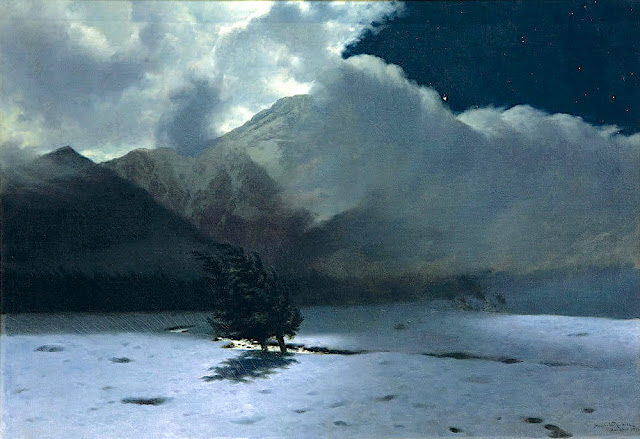
A. G. CARRICK / H.M KING CHARLES III former PRINCE OF WALES (bn.1948)
Les Dentelles de Montmirail (734m - 2,400 ft)
France (Vaucluse)
In Les Dentelles de Montmirail from Le Barroux, watercolor, Priaate coillection
The mountains
The Dentelles de Montmirail (734 m - are a small chain of mountains in Provence in France, in the département of Vaucluse, located just to the south of the village of Vaison-la-Romaine. They are foothills of the highest peak in Provence, Mont Ventoux, which is situated just to the east. The dramatically jagged shape of their peaks was formed by horizontal strata of Jurassic limestone being folded and forced into a nearly upright position and subsequently eroded into sharp-edged ridges and spikes. The highest peak of the Dentelles is St-Amand, at 734 m (2,400 ft). The range, which is about 8 km wide, offers over 600 trails for walking, rock climbing, and mountain biking.]The foot of the Dentelles is surrounded by vineyards of the Rhône Valley. Their name Dentelles, the French word for "lace," refers to their shape obtained by erosion, while Montmirail is derived from the Latin mons mirabilis meaning 'admirable mountain'.
Located on the territory of the communes of Beaumes-de-Venise, Crestet, Gigondas, La Roque-Alric, Lafare, Le Barroux, Malaucène, Suzette, and Vacqueyras; the Dentelles de Montmirail were an important natural frontier during Antiquity between the tribes of the Memini in the south, and the Voconces in the north.
The painter
Arthur George Carrick is actually H.M. the King Charles III, former Prince of Wales.
When he began
showing his paintings, he was too nervous to display his name so
displayed under a pseudonym. Arthur George are two of his names (Charles
Phillip Arthur George) and one of his titles is Earl of Carrick. King
Charles III is an experienced watercolourist. He has been painting for
most of his adult life, during holidays or when his official diary
allows. King
Charles' interest began during the 1970s and 1980s when he was inspired
by Robert Waddell, who had been his art master at Gordonstoun in
Scotland. In time, King Charles met leading artists such as Edward
Seago, with whom he discussed watercolour technique, and received
further tuition from John Ward, Bryan Organ and Derek Hill.
The
Royal Family has a tradition of drawing and painting, and King Charles’
work first came to public notice at a 1977 exhibition at Windsor
Castle at which other Royal artists included Queen Victoria, The Duke
of Edinburgh and The Duke of York.
King Charles paints in the open
air, often finishing a picture in one go and his favourite locations
include The Queen's estate at Balmoral in Scotland and Sandringham House
in Norfolk, England. Sometimes King Charles III paints during his
skiing holidays, and during overseas tours when possible.
The
copyright of King Charles' watercolours belongs to A. G. Carrick Ltd, a
trading arm of The King's Charities Foundation. Over the years King Charles III has
agreed to exhibitions of his watercolours and of lithographs made from
them, on the understanding that any income they generate goes to The
Prince of Wales's Charitable Foundation.
Money from the sale of the lithographs also goes to the Foundation but the paintings themselves are never for sale.
In the 1980s King Charles III, then Prince of Wales, began inviting young British artists to
accompany him on official tours overseas and record their impressions, a
tradition that has continued to this day.
Reference :
- The prince of Wales paintings
2021 - Wandering Vertexes...
by Francis Rousseau








